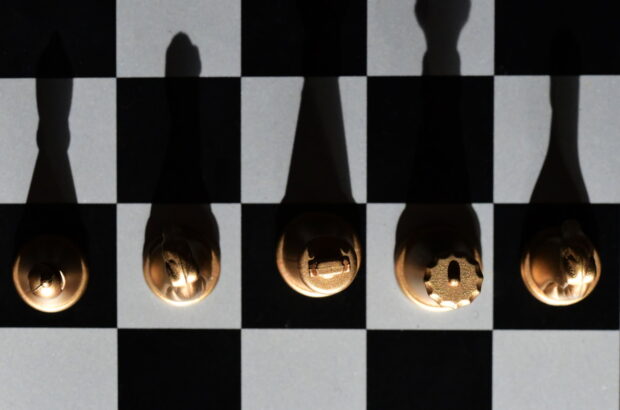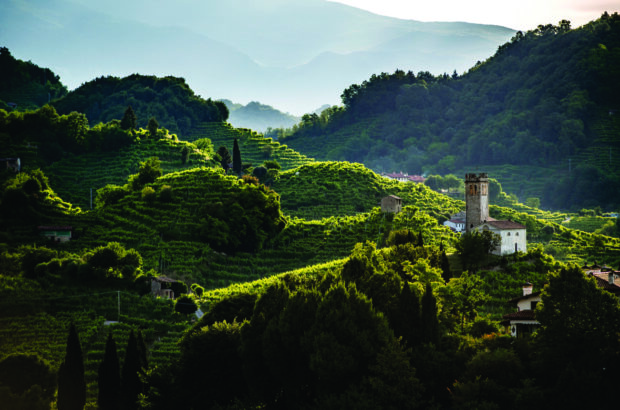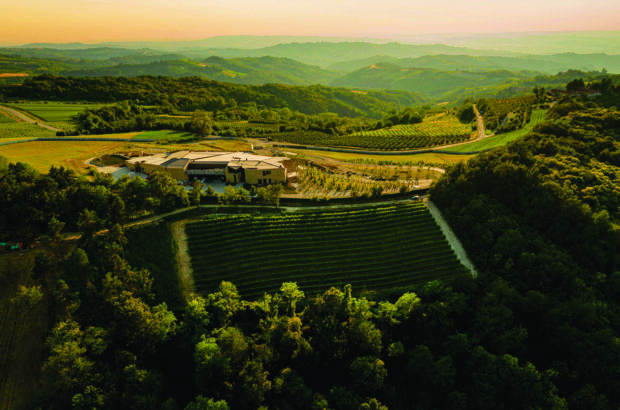Cellar delights at Octavian
Amy Wislocki
Autumn sees the tasting schedule hot up, and it’s been a whirlwind – various supermarket tastings, the launch of Gosset’s chalky, delicious Celebris Blanc de Blancs 2012 (£230 Millésima), and a rattle through some of the great Cabernets of the world.
But the highlight, by a country mile, was a tasting hosted at Octavian, a fine-wine storage facility in a converted stone mine in Wiltshire. Provenance has never been more important in fine wine, and the tasting showcased some of the best wines of Champagne, Bordeaux and Burgundy, all in immaculate condition after professional cellaring. The line-up featured such starry names as Dom Pérignon, Krug, Coche-Dury, Comtes Lafon, Domaine Fourrier and Mouton Rothschild. But one wine stood above even these great names, heartstopping in its glory – the Château Cheval Blanc, St-Emilion 1GCC 1949. This was one of those rare tasting experiences that you know you will remember for the rest of your life. How could a wine that’s more than 70 years old taste so incredibly youthful? It had it all: colour, power, perfume, grace… It seems impossible, but this wine didn’t appear to be fading at all. A testament to great soil, winemaking talent – and impeccable storage.
Terroir-driven South Africans
Tina Gellie
Ahead of a trip to South Africa, in part to present Rosa Kruger with her 2022 Decanter Hall of Fame award, I reflected on how instrumental she has been – in her modest way – in helping shape, from the vineyard, so many of her clients’ critically acclaimed wines.
At a tasting with Marc Kent of Boekenhoutskloof earlier this year – coincidentally also with Tim Atkin MW, who wrote our Hall of Fame winner profile – I was blown away by all the 2019 releases.
I’m perennially enthralled by Boekenhoutskloof’s Swartland Syrah, but on this occasion the Franschhoek Cabernet Sauvignon 2019 stood out (£40-£42 Cadman, Frazier’s, Wine Direct). Smoky, mineral and fresh, the chocolatey-smooth palate of brambles, toasty oak and inky tannins is lifted by floral, herbal Cabernet Franc (5%).
Later, dinner with another of Kruger’s clients, Johan Reyneke of Reyneke. Again, while seduced by all his organic and biodynamic wines, it was not my usual favourite Syrah – the 2019 this time – that stole the show, but his Reserve White 2017 from Stellenbosch (£25 The Wine Society). A zingy, pure 100% Sauvignon Blanc (12% alc) that’s like nothing you’ve ever tasted: sea spray pooling on fresh guava and lemongrass with a whisper of oak spice.


The many faces of Savatiano
Ines Salpico
With sunny days and sterling strong now a rather distant memory, I’ve been revisiting some of the wines and producers discovered during a summer trip to Attica, the southern mainland Greek region with Athens as its epicentre. Attica’s flagship variety, Savatiano, may have undeservedly become synonymous with lesser quality wines, its low yields and drought resistance making it a perfect ‘workhorse’ variety. Handled with the attention it deserves, however, and with yields kept in check, it is able to deliver expressiveness and quality across a range of styles.
A sublime tasting with Vassilis Papagiannakos, the man who almost single-handedly rescued Savatiano from complete neglect, showed the variety’s full potential, especially in his Vareli 2020, a skin-fermented and barrel-aged iteration, and the sublime Honores 2015, hailing from old vines and showing a beautiful, Riesling-like ageing journey, yet to be completed.
There’s a great dynamism in the peninsular region, with younger winemakers – many of whom have been inspired by Papagiannakos – building upon multi-generational knowledge to explore new approaches. Among them is Stamatis Mylonas of Mylonas. His Pét-Nat Retsina (US$28.99 Martha’s Vineyard Michigan) and Naked Truth,
a single-vineyard, skin-macerated bottling (2021, £16.25 Maltby & Greek), showcase not only his winemaking craft and courage to experiment, but also – and above all – an incredible knowledge of Savatiano.


FeudiStudi whites
James Button
I first visited Feudi di San Gregorio during a visit to Campania back in February, but have been familiar with its impressive array of well-distributed wines for much longer – and in 2020 I was introduced to the long-running FeudiStudi project. It’s a huge research effort mapping the intricate terroir of more than 700 sites across Irpinia and as part of the project, the estate bottles four each of its most expressive Aglianico, Fiano and Greco di Tufo plots in very limited quantities, to show the potential of the terroirs.
In June 2022, chairman Antonio Capaldo travelled to London to host a masterclass on the 2019 whites at 67 Pall Mall. ‘We want to emphasise the differences in the wines,’ said Capaldo, explaining that each is made with minimal intervention to preserve the individual characters of the wines. Quercia Grossa, Fiano di Avellino 2019, from the slope in front of the winery in Santo Stefano del Sole, was particularly fascinating. Its late-harvest fruit has been vinified into a dry wine dripping with defined stone fruits and honey, then a mineral finish. Huge intensity married to razor-sharp acidity makes for an exciting, long- lived wine. Just one facet of a complex jigsaw puzzle that Capaldo and his team are still piecing together.
Anam Cara Cellars
Clive Pursehouse
My introduction to Oregon’s Willamette Valley was through a bottle of Anam Cara Cellars Pinot Noir. I had just moved to the Pacific Northwest the year before and my interest in wine was burgeoning. A few years later I’d visit the winery’s Nicholas vineyard, a beautiful former orchard in the north of the Willamette Valley in the Chehalem Mountains AVA that gives elegant wines with great balance and minerality.
Which brings me to the Anam Cara Cellars, Rosé of Pinot Noir 2021. Why highlight a rosé in November? Well, I just tasted a bunch of them, trying to make the case for drinking rosé year-round.
Thanksgiving is the greatest food holiday of the year in the US. For that reason, I always squirrel away a few bottles of the wildly popular pink stuff that, for many producers, is often gone by midsummer. This wine is perfect for food: great acidity but a heft that makes it a more cerebral, slightly darker-hued pink wine experience. Aromas are highlighted by white flowers, wild strawberries and plum skins. On the palate, there’s sweet berry fruit with redcurrant and rhubarb, a surprisingly textured mouthfeel and a long finish.













